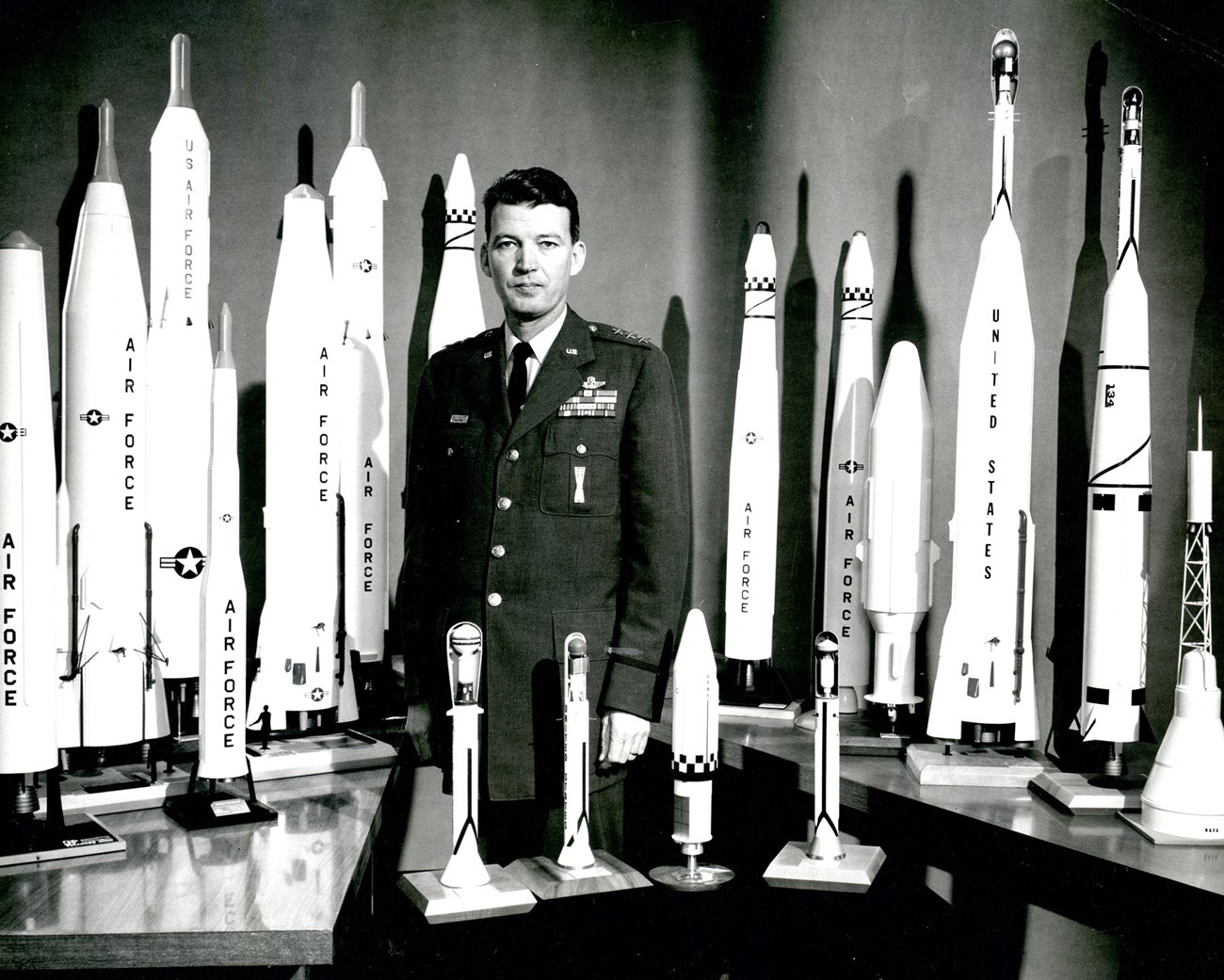Part of a series of articles titled Minuteman Missiles and the Nuclear Arms Race.
Article
The American ICBM Program

U.S. Air Force
American military planners began developing ballistic missiles immediately after World War II. But by the late 1940s, America's missile program began to languish, largely because the Nation's nuclear superiority seemed secure. In 1949, when the Soviet Union developed its atomic bomb, America responded with an even more powerful weapon - a thermonuclear device that used a small atomic trigger to initiate a fusion reaction in hydrogen isotopes. Successfully tested in 1952, the H-bomb seemed to guarantee America's nuclear superiority. But in August 1953, the Soviets exploded their own H-bomb, and many US military experts also believed that the Soviets could deliver their new weapon via an ICBM. For the first time, the Soviets seemed poised to take the lead in the arms race.
Following the Soviet's successful H-bomb test, two independent US organizations reevaluated the strategic importance of ICBMs to national security. As Dr. Bruno Augenstein of the RAND Corporation observed, "If the Soviet Union beat the United States in a race for the ICBM, the consequences would be catastrophic." An Air Force committee headed by Dr. John von Neumann, a Princeton University mathematics professor, also assessed the arms race. Code-named the "Teapot Committee," von Neumann's group investigated "the impact of the thermonuclear [bomb] on the development of strategic missiles and the possibility that the Soviet Union might be somewhat ahead of the United States." In February 1954, RAND and the Teapot Committee released their reports, both of which reached the same conclusion: recent advances in thermonuclear technology made an ICBM practical. Furthermore, an ICBM "could be developed and deployed early enough to counter the pending Soviet threat if exceptional talents, adequate funds and new management techniques suited to the urgency of the situation were authorized."
By May 1954, the Air Force had mapped out a development plan for the new weapon. In June, Vice Chief of Staff General Thomas D. White ordered the Air Research and Development Command "to proceed with the development of an ICBM at the highest speed possible, limited only by the advancement of technology in the various fields concerned." In July, the Air Force established a special project office to administer the program. Based on the West Coast, the new agency was consequently called the Western Development Division. Bernard A. Schriever, a 43-year-old brigadier general, headed Western Development Division. The Air Force expected the newly-promoted young general to place a fully operational ICBM weapon system into the hands of the Strategic Air Command within six years. The Air Force considered Western Development Division's mission so important to national security that even its initials, WDD, were classified beyond top secret.
On August 5, 1954, General Schriever and a small group of military officers converged on an abandoned parochial school in the Los Angeles suburb of Inglewood to begin their work. To avoid arousing the curiosity of nearby residents, the officers wore civilian clothes. Journalist Roy Neal, who chronicled the development of the Minuteman missile system, described what they found:
No sign identified the white schoolhouse as the Western Development Division. . . .The windows were frosted and heavily barred. All outside doors, except one, were locked. The only entrance was across a chain-link fenced parking lot. A security guard manned the door. . . Some of the old-timers recall . . . the comment of the school boy who was sauntering by the school building. Eying the frosted glass and steel-barred windows, he said to a chum, "Boy am I glad I don't go to school here."
In this inconspicuous but carefully secured setting, the hand-picked staff of the Western Development Division began the effort to build an intercontinental ballistic missile.
Last updated: October 20, 2020
